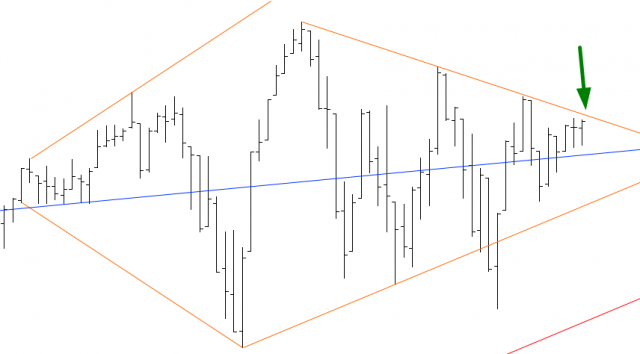No ETFs Aren t Wrecking Emerging Markets But the Fed Sure Helps Focus on Funds
Post on: 30 Апрель, 2015 No Comment

By Brendan Conway
If you read this weeks column by John Authers of the Financial Times arguing ETFs have hastened stampedes of speculative capital in and out of emerging markets, harming their economies I linked to it here next you should check out Matt Hougans interesting counterpoint at ETF.com .
To summarize Authers: ETFs have led the recent emerging-markets selloff. Theyve fostered a damaging misallocation of capital by making it so easy for foreign investors to flit in and out of emerging stock markets at a whim. Closed-end fund managers arent forced to liquidate their portfolios when flighty investors decide they want to leave. Advantage, CEFs.
EPA Spectre in Turkey
To summarize Hougan: Sure, flighty international capital can be painful for emerging markets. But singling out exchange-traded funds is odd. There was hot mutual-fund money long before exchange-traded funds. Stock prices can plunge in Sao Paulo or New Delhi whether the fickle investor sells at 11:04 a.m. via iShares MSCI Emerging Markets ETF (EEM ) or via an old-timey mutual fund at 4:00 p.m. Oh, and, although I love reading the FT, the data in this column is way, waaay off.
Advantage: Hougan. Heres why.
Lets start with the data. Its off by a Serengeti or two, and in ways that make emerging markets look more dependent on ETF money than they really are.
Authers cites a Morgan Stanley figure of $1.3 trillion market value for all emerging stocks. Well, indexer MSCIs estimate is $3.7 trillion, and MSCI is the standard-bearer for the subject. Couple this with what appears to be an overstatement of the assets held in emerging-markets ETFs by at least a quarter and you come away thinking ETFs really dominate the emerging markets. (The FT says they hold $330 billion, but BlackRock ( BLK ) estimated $258 billion at the end of 2013; Hougans figure for U.S. emerging-markets investors is an even smaller $117 billion.)
So how much weight do ETFs throw around in emerging markets? The FTs numbers would point to a formidable 25% of all market value, but the standard numbers suggest just 3% to 7%.
Could 7% of the market be responsible for the recent ills? I suppose its possible, but youd be discounting the role of dwindling foreign currency reserves, political instability and corruption, and a stingier policy at the Federal Reserve, to name three triggers of financial turmoil that long predate ETFs.
But lets step back from the data to talk about trigger fingers: ETFs continuous trading during market hours invariably comes up. Doesnt instantaneous trading enable investors to be more prone to stampeding? In theory, sure. But this turns out to be not as radical a change from conventional mutual funds. Ask yourself whether Sao Paulo should care what time of day a stupid foreign investor hits the exit. It doesnt matter. What matters is that a hedge fund dumped $30 million of Petrobras (PBR ) shares.
From Hougan:
People obsess about the fact that you can trade ETFs on an intraday basis, as if that is somehow wildly different than the daily liquidity offered by mutual funds. The much bigger difference lies in costs.
About the costs, Hougan has a line on the closed-end fund cited in the column:
Authers’ beloved Foreign & Colonial Investment Trust has been running for 148 years and currently has $4.2 billion in assets. In a magnificent coincidence, if it runs for another 148 years, it will charge exactly $4.2 billion more in fees than IEMG (assuming markets are flat).
IEMG is iShares MSCI Core Emerging Market ETF .
The only thing Id add is that, if there is a foreign boogeyman, its the Fed. The Federal Reserve has made clear it doesnt view itself as central banker to the world. Meanwhile, small policy changes can leave financial markets around the world twisting in the wind.
But even the Feds policies are often simply exposing problems in the domestic economies and politics of the emerging markets. Take what colleague Randall Forsyth wrote about Turkeys interest-rate increase last week. in a useful look in the mirror moment:
Turkey’s problem is that it has been living in a credit bubble funded by foreign capital seeking high returns in a low-rate world. Unfortunately, capital inflows mainly financed a consumer boom that was not supportable by the Turkish economy.
History has shown that even boosting short-term interest rates by more than half rarely is a sufficient bribe to foreign investors to pour money into an economy that is fundamentally untenable. The extra 425 basis points (4.25 percentage points) in annual yield on the overnight lending rate can be erased, well, overnight. It may punish traders who have shorted the Turkish lira (which means borrowing the currency, now at a higher interest cost) for a time. But it doesn’t address the fundamental problems that beset the Turkish economy.
It’s been suggested that the MINTs–the acronym for Mexico, Indonesia, Nigeria and Turkey–are supposed to be the successor to the BRICs–Brazil, Russia, India and China. Sometimes, MINTs can leave a bad aftertaste.
Moodys Upgrade Adds $1 to the Mexico ETF Next
Funds Roundup: Schwabs ETF-Powered 401(k); Emerging Mayhem (Cont.)














